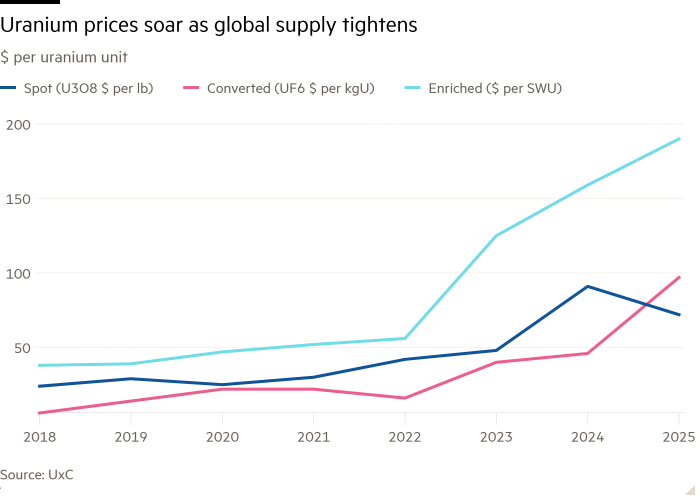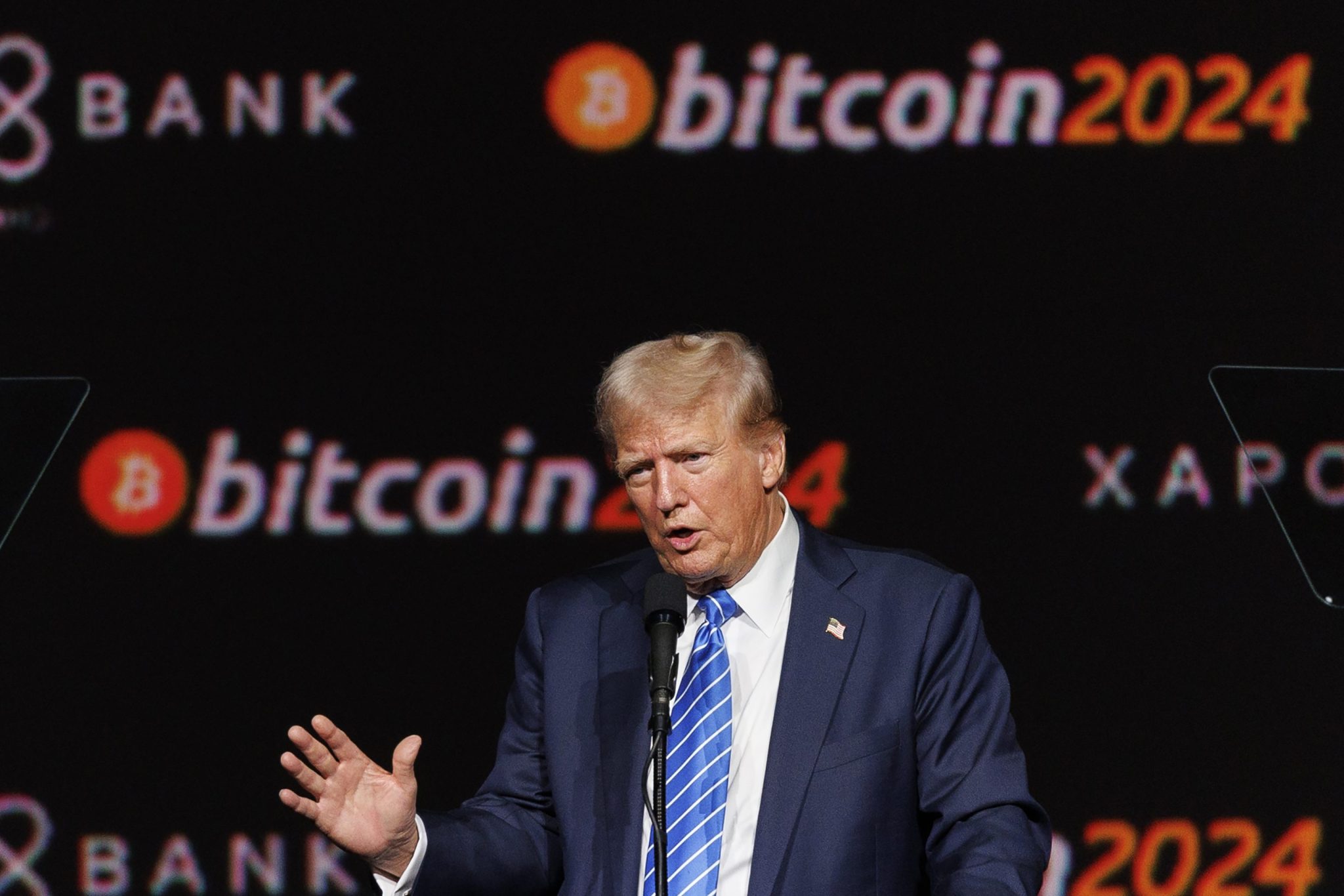Open Editor’s Digest for free
Rula Khalaf, editor of the Financial Times, picks her favorite stories in this weekly newsletter.
The price of nuclear reactor fuel has risen to a record high, as demand from artificial intelligence data centers exacerbates pressure on the market in the wake of Russia’s invasion of Ukraine.
Enriched uranium prices have reached $190 per unit of separation labor — the standard measure of the effort required to separate uranium isotopes — compared with $56 three years ago, according to data provider UxC.
The renewed interest in nuclear energy has come as governments and companies look to carbon-free energy sources large enough to serve major industrial facilities and communities.
Big tech companies like Microsoft and Amazon have become interested in using the fuel to power the energy-intensive data centers they are racing to build as they compete for market share in generative AI.
Increased competition for energy has heightened industry concerns in the wake of Russia’s invasion of Ukraine nearly three years ago. Russia is a major player in the process of converting uranium extracted from mines into the enriched fuel needed for a nuclear reactor, but US sanctions and a Russian export ban have helped push prices to record levels.
“We don’t have enough conversion and enrichment in the West, which is why the price has seen this kind of move, and this price is only going to go up,” said Nick Lawson, CEO of Ocean Wall Investment Group.
Executives and analysts say the problem is likely to be exacerbated by the expiration of the US exemption for importers at the end of 2027. This pressure has put pressure on the industry to find new facilities that can convert uranium into pellets that go into nuclear reactors. . Outside of Russia, the main Western countries with operational uranium conversion facilities are France, the United States, and Canada.

“There are a lot of very important political decisions to be made” about investments in the nuclear and uranium supply chain, Lawson said, adding that building new facilities would take “years” and cost huge amounts of money.
About 27 percent of U.S. imports of enriched uranium in 2023 came from Russia, according to analysts at Berenberg. Analysts added that while US utilities will likely have enough fuel for this year, their coverage will decline significantly within four years.
“U.S. utilities will have to begin contract discussions this year to secure them [uranium]“Especially with the imposition of restrictions on Russian uranium imports to the United States at the end of 2027,” they said.
Most uranium is sold under long-term contracts rather than on the open or spot market. But spot delivery prices may rise as a result of potential pressure on the availability of uranium itself, industry analysts say. Kazatomprom, Kazakhstan’s state mining company and the world’s largest uranium producer, has warned in recent months of lower-than-expected production.
“We increasingly see that Kazakh material will flow to China and Russia, and less of it will go to the West,” which poses “a problem for Western utilities,” said Andrei Liebenberg, CEO of London-listed uranium investment company Yellow Cake. “We could easily see a supply crunch in the medium term just because there are no new projects that can start production quickly.”
https://www.ft.com/__origami/service/image/v2/images/raw/https%3A%2F%2Fd1e00ek4ebabms.cloudfront.net%2Fproduction%2F5b8742d6-feaa-4353-a71d-ebd2ce5ba3d2.jpg?source=next-article&fit=scale-down&quality=highest&width=700&dpr=1
2025-01-11 13:00:00
#Uranium #prices #hit #record #thirsty #data #centres #add #market #squeeze


